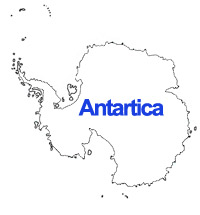
A recent study revealed that the floating ice shelves in a part of West Antarctica are constantly losing their grip on the adjacent bay walls and has accelerated the rate of loss of ice to the sea.
The most extensive current record of the evolution of the floating ice shelves in the eastern Amundsen Sea Embayment in West Antarctica shows that the margins of the ice shelves, where they hold to the rocky bay walls or slower ice masses, are fracturing and retreating inland.
Due to continuous loosening of the grip, these ice shelves which has are already thin will be even less able to hold back grounded ice upstream, says glaciologists at The University of Texas at Austin's Institute for Geophysics (UTIG).
The UTIG team has found that the extent of ice shelves in the Amundsen Sea Embayment reduced significantly from beginning of the Landsat satellite record in 1972 and late 2011.
These changes were even faster during the past decade. The most affected ice shelves include the Thwaites and Pine Island Glaciers.
"Typically, the leading edge of an ice shelf moves forward steadily over time, retreating episodically when an iceberg calves off, but that is not what happened along the shear margins," said Joseph MacGregor, research scientist associate and lead author of the study.
When an ice berg breaks off and floats into the sea, it’s called calve.
"Anyone can examine this region in Google Earth and see a snapshot of the same satellite data we used, but only through examination of the whole satellite record is it possible to distinguish long-term change from cyclical calving," said MacGregor.
The cut margins that holds these ice shelves laterally have been heavily interrupted that resembles to a broken mirror in the satellite image.
The front of the calving then retreats along these separating margins. The pattern of the rift in the margins and its retreat can be considered to be a symptom of the recent glacier acceleration in this region, but this pattern can lead to additional acceleration.
"As a glacier goes afloat, becoming an ice shelf, its flow is resisted partly by the margins, which are the bay walls or the seams where two glaciers merge," explained Ginny Catania, assistant professor at UTIG and co-author of the study.
"An accelerating glacier can tear away from its margins, creating rifts that negate the margins' resistance to ice flow and causing additional acceleration."
The UTIG team involved in the study found that the largest relative glacier accelerations are happening within and upstream of the rifted margins.
Since, there was no exact record for the pattern was available; the pattern of degeneration had been neglected in most of the computer models of this critical region of West Antarctica.
The authors said that several rifts present in the ice shelves indicates that they are assured to contract further.
The details of the study have been published in the Journal of Glaciology.
-with inputs from ANI.
|
|
Read More: South West Delhi | North West Delhi | West Midnapore | West Sikkim | West Kameng | West Siang | West Khasi Hills | West Garo Hills | Imphal West | West Tripura | West Singhbhum | West Champaran | Patel Nagar West | Kidwai Nagar West | Subhash Nagar West | R K Puram West | Kanpur West | Govind Nagar West | West Colony | Teynampet West So


Comments: